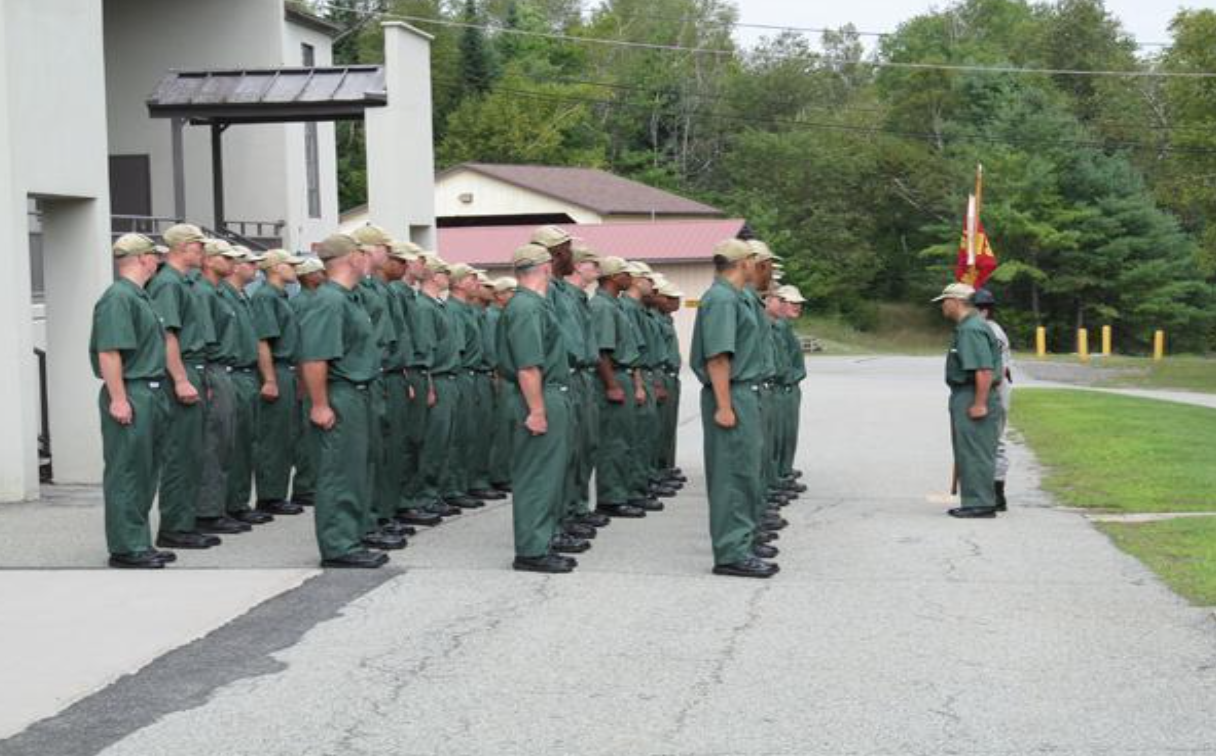9.4: Campamentos de entrenamiento y encarcelamiento por choque
- Page ID
- 152997
Éxito del Boot Camp
[1] Para los individuos prosociales, la estructura y la disciplina pueden ser ventajosas. Sin embargo, cuando se mezclan individuos de diferentes niveles de actitudes antisociales, asociados antisociales, temperamento antisocial (personalidad) y antisocial (antecedentes penales), las reducciones en la reincidencia generalmente no aparecen. Como hemos comentado en el apartado de rehabilitación, las necesidades criminogénicas a menudo no se atienden dentro de los campamentos de entrenamiento. De esta manera, los campamentos de entrenamiento no logran reducir la reincidencia por varias razones. Primero, dado que los campamentos de entrenamiento no atienden las necesidades criminogénicas, tienden a no ser efectivos. Segundo, debido a los menores requisitos de admisión de los campamentos de entrenamiento, los individuos generalmente se “agrupan” en una fecha de inicio dentro de un campo de entrenamiento. Por lo tanto, los delincuentes de alto riesgo y los infractores de bajo riesgo se colocan juntos, construyendo un grupo cohesivo. Así, los delincuentes de menor riesgo ganan asociados antisociales que son de alto riesgo. Finalmente, cuando los campamentos de entrenamiento enfatizan el aumento de la fisicalidad, más que el cambio de comportamiento, generalmente no reduce el comportamiento agresivo (personalidad antisocial y reincidencia). Un metaanálisis reciente (un estudio de estudios de un tema) encontró que este es el caso. [2] Para obtener más información sobre el estado de los campamentos de entrenamiento, consulte https://www.crimesolutions.gov/PracticeDetails.aspx?ID=5.
Formación de pelotón en un campo de entrenamiento

- Parent, D. G. (2018). Investigación para la práctica: Boot Camps Correccionales: Lecciones de una década de investigación. Departamento de Justicia de Estados Unidos, Oficina de Programas de Justicia, Instituto Nacional de Justicia (3 de junio), NCJ 197018 [1]https://www.ncjrs.gov/pdffiles1/nij/197018.pdf
- Wilson, D. B., MacKenzie, D. L., & Mitchell, F. N. (2005). Efectos de los campamentos de entrenamiento correccionales sobre la ofensa. Campbell Revisiones Sistemáticas, 6, 1-42.


